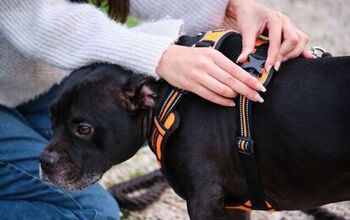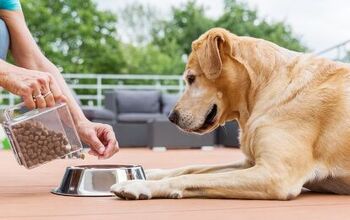Thrianta Rabbit


About Thrianta Rabbit
The Thrianta rabbit breed got its start in Holland, where it was developed by a breeder named H. Andreae, who wished to create a breed in honor of the royal House of Orange. He bred a variety of rabbits (such as Havanas and Tortoise Papillon) to create this new breed of rabbit and named it after where he lived, Thrianta. This breed was recognized by the Dutch in May of 1940, just before World War II.
Unfortunately, most of the Thrianta Rabbits were used as a meat source during the war and it was almost wiped out completely. The few Thriantas that did survive were bred with German rabbits, and this new breed of Thriantas were brought over to America circa 1996. The breed was recognized by the American Rabbit Breeders Association (ARBA) in 2005 and the breed continues to grow in popularity.
The Thrianta rabbit breed was created in honor of the royal House of Orange.
The Thrianta rabbit can weigh anywhere from 4-6 lbs once it is fully grown and maintains a compact body shape. Overall, this rabbit breed should be rounded, smooth and plump with hindquarters that all also round from all directions. It should have a short, full head set on a short neck and erect, stocky, thickly-furred ears.
Thrianta rabbits have short, thick, medium-length rollback fur which is soft to the touch. It does not require any special grooming but would benefit from being groomed once every two weeks with a slicker brush. During molting season, Thrianta rabbits should be groomed every week or as necessary to remove stray hairs from the coat and keep it in good condition. Under no circumstances should any rabbit be bathed, as this causes great stress and may even cause their death. Instead, simply spot-clean its coat with a damp cloth to remove any dirt.
The ARBA accepts only one color of Thrianta rabbit and that is its signature fiery red throughout its entire body with no other body markings.
The Thrianta rabbit has a signature fiery red coat, with no other body markings.
Like any other breed of rabbit, Thriantas require a diet consisting of at least 70 percent hay. The rest of its diet is made up a healthy balance of pellets, leafy greens, fruits and vegetables. Be aware of what kind of leafy greens you feed your rabbit, as some of them (like iceberg lettuce) contain almost no vitamins or nutrients – on the contrary, some contain landanum, which can be harmful in large quantities. Also be careful of what kind of vegetables you decide to feed your rabbit, as some of them are simply harmful (such as beans, cabbage, potatoes, etc) and other fruits contain too much sugar to be healthy for them.
Thrianta rabbits do well indoors or outdoors, provided this breed is given plenty of time out of its enclosures to stretch its legs and enjoy some much-needed sunshine. Outdoor enclosures should be made of wood or wire and need to be raised off the ground in order to provide protection from wildlife. Indoor rabbit enclosures should be made of wire and have bedding that should be spot-cleaned every day for cleanliness, and completely changed out at the end of every week.
To have a well-rounded Thrianta rabbit who is friendly of new people (young or old, new or familiar), proper socialization is a must. This means taking your Thrianta kit out of its enclosure for as long as you can every day and introducing it to new experiences (such as being outside) and allowing newcomers to pet and play with your rabbit in your home. Rabbits also do well with other non-threatening pets, so long as the other animal is also willing to accept the new pet into its home. Remember to always be present when two animals are together, as they don’t always get along (as much as we hope they do).
Due to the Thrianta’s short coat, it is not at-risk for digestive issues such as woodblock, however it is still susceptible to problems such as overgrown teeth, flystrike and ear mites. Rabbit owners need to check their rabbit’s ears every 2-3 weeks for mites, and if your rabbit’s diet does not consist mainly of hay, it may develop overgrown teeth. This will affect if/how much it eats, as its constantly growing teeth can grow into its jaws and faces and be painful. This can be corrected with a quick trip to your local vet at first, and then switch to a diet that is higher in hay, as it naturally grinds down your rabbit’s teeth.
Female rabbits (does) can be spayed when they are as young as four months old, however vets tend to wait until they are six months old, as there is less risk involved on the operating table. Male rabbits (bucks) are eligible to be neutered as young as three and a half months old. All rabbits should also be given worm prevention treatment and checked for ticks and fleas regularly.
The Thrianta rabbit is an excellent breed for those wanting to try out pet ownership with a rabbit, as they are gentle, sweet animals.
The Thrianta rabbit is an excellent breed for those wanting to try out pet ownership with a rabbit, as they are gentle, sweet animals who do not require much maintenance in order to keep it happy. Its docile nature also makes them excellent pets for families with younger children, as its size is small enough to be manageable but not small enough to be extremely fragile or easy to accidentally hurt. The Thrianta Rabbit also make great pets for singles, couples and seniors.
Rabbits are much harder to litter train than other animals such as cats, dogs and birds however it is possible with lots of patience, perseverance and plenty of treats. Many rabbit parents will have 5 or 6 litter scattered across their home so their pet rabbit can easily access the litter box instead of doing the deed wherever they please. With lots of time, patience and rewards, your Thrianta rabbit will easily be on their way to being litter trained!
Photo credit: Chris Lanzarotti/Flickr; Guiding L/Flickr; Orange Princess/Flickr

More by Diana Faria

























